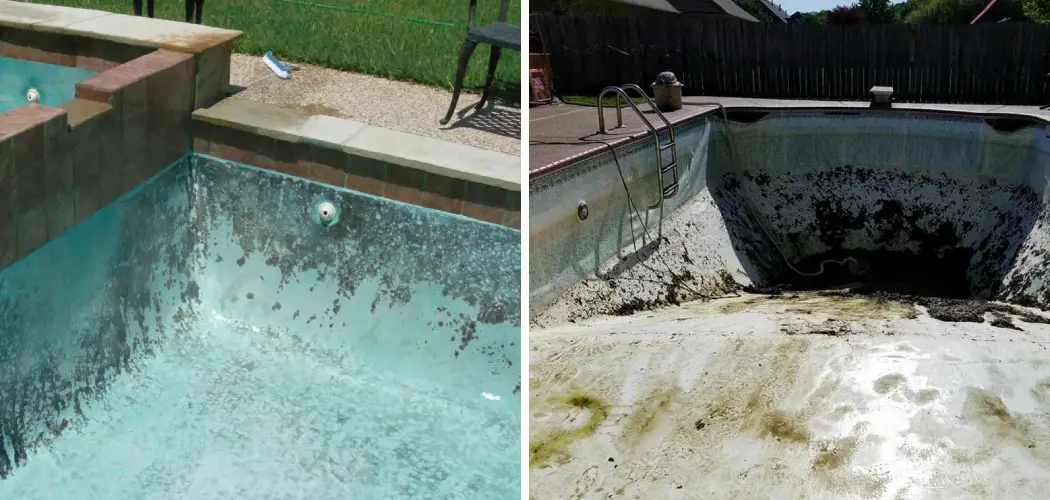Are you having a hard time keeping the copper and iron levels in your pool water balanced? This can be an incredibly frustrating problem to have, as the high concentration of either mineral can cause discoloration and even corrosion.
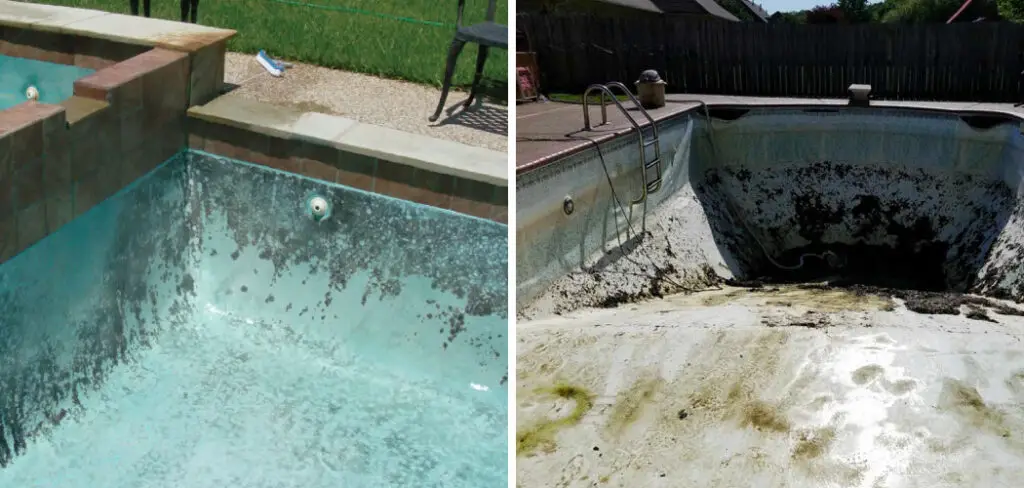
If not treated properly, it could mean costly damage down the road. Luckily, there are several effective methods for removing copper and iron from pool water so that you can maintain good quality water without any worries. Read on to learn more about how to remove copper and iron from pool water!
Maintaining a clean and healthy pool is essential for long-term use, especially if it contains appreciable amounts of iron or copper. These metals can both cause staining on the surface of your pool, as well as damage to certain components. As such, keeping your pool water free from these contaminants should be a top priority.
Fortunately, with the right knowledge and supplies, you can easily remove both iron and copper from your pool water in an efficient manner that won’t affect its overall composition too much.
Why Do You Need to Remove Copper and Iron From Pool Water?
There can be many problems caused by high levels of copper and iron in your pool water. Such as:
1. Discoloration
One of the most obvious symptoms of copper and iron in pool water is discoloration. Water can take on a brownish or greenish hue due to high amounts of copper or iron in the water. This can make your pool look unattractive and uninviting.
2. Staining
High levels of copper and iron can also lead to staining on your pool’s interior surface and on your pool equipment. This can make it difficult to maintain the cleanliness of your pool as well as its aesthetics.
3. Corrosion
High levels of copper and iron in your pool water can also lead to corrosion of metal components, such as ladders, rails, etc. This can cause damage to your pool’s infrastructure and be costly to repair.
14 Methods Of How to Remove Copper and Iron From Pool Water
1. Use a Metal Sequestering Agent
Adding a metal sequestering agent to your pool water can help reduce the amount of copper and iron present. This is done by forming insoluble complexes with metals that are already suspended in the pool water. Also, it helps to prevent staining from metals.
2. Install an Ion Exchange System
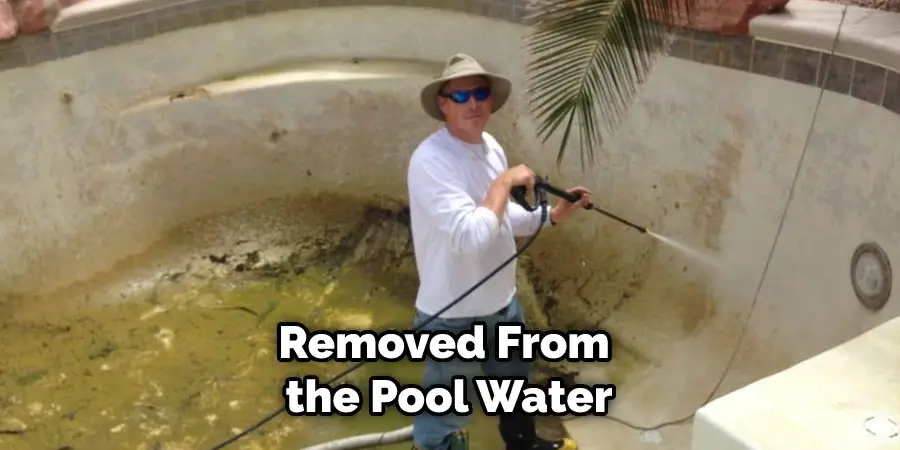
The most effective way of removing copper and iron from pool water is to install an ion exchange system, also known as a water softener. This process works by exchanging the metallic ions in the pool water with sodium or potassium ions. The exchanged ions are then removed from the pool water.
3. Install an Oxidizing Filter
An oxidizing filter is a type of filter that removes metals by exposing them to air and light, which causes them to become oxidized. This process can help reduce the amount of copper and iron present in the water. Be careful, though! The oxidizing filter can damage the pool liner if not installed properly.
4. Install an Activated Carbon Filter
Activated carbon filters are effective at removing organic materials and other contaminants from water, including copper and iron. This is because activated carbon has a large surface area that helps to trap metals in its pores.
5. Shock the Pool Water
Pool shock is a chemical that helps to kill bacteria and other microorganisms in pool water. It can also help remove copper and iron from pool water, as it oxidizes the metals and causes them to form insoluble complexes.
6. Use a Clarifier
Clarifiers are chemicals that are designed to bind small particles together, which makes it easier for the filter to capture them. This can help reduce the amount of copper and iron present in pool water by collecting small particles that contain metals.
7. Change Out Filter Media
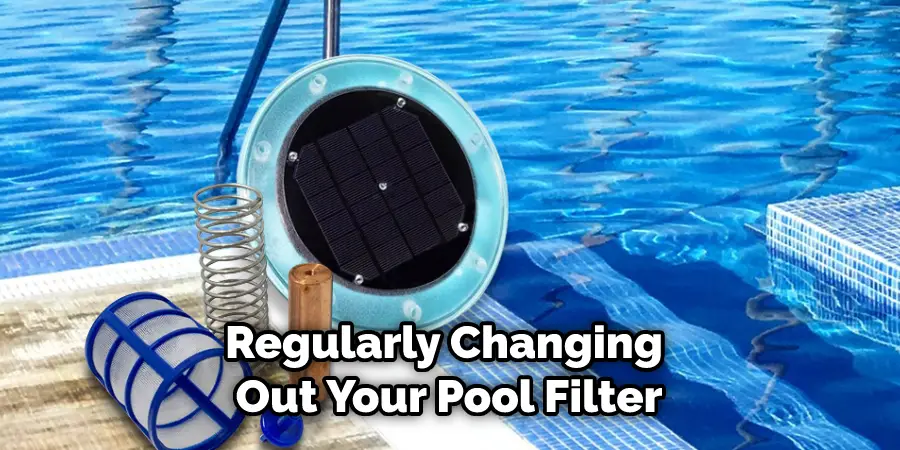
Regularly changing out your pool filter’s media can help remove copper and iron from pool water. The most effective media are diatomaceous earth (DE) filters, which help to trap particles as small as 2 microns.
8. Check the pH Level of Pool Water
Maintaining proper pH levels in pool water can help reduce copper and iron staining. Copper and iron are more likely to bind with other materials if the pH level is too low, so it’s important that you keep it at a safe level.
9. Remove Debris from the Pool Regularly
Removing any debris that may be present in your pool can help reduce the amount of copper and iron present. This is because debris acts as a breeding ground for metals and other contaminants, which can increase their levels if left unchecked.
10. Use a Stain and Scale Remover
A stain and scale remover is a chemical that can be added to pool water to help remove copper and iron staining. This product helps break down metallic bonds, making it easier for the filter to capture them.
11. Use an Iron Filter
An iron filter works by oxidizing iron, which then forms insoluble complexes that can be removed from the water by the filter. The iron filter is effective at removing both ferrous and ferric iron.But you have to make sure that the filter is compatible with your pool’s water chemistry.
12. Install A Polyphosphate Feeder
A polyphosphate feeder helps to reduce the amount of copper and iron present in pool water by coating them with phosphates. This prevents them from staining surfaces and forms insoluble complexes that can be removed by the filter.
13. Clean the Pool Regularly
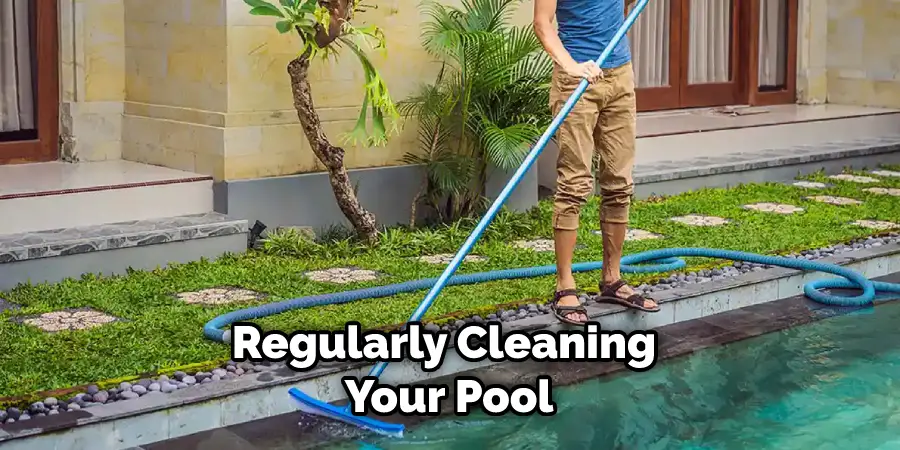
Regularly cleaning your pool can help reduce the amount of copper and iron present in the water. Use a brush to scrub away any stains or buildup that may be present, which can help keep metallic levels low.
14. Utilize a UV Light System
A UV light system helps to break up the bonds between copper and iron, making it easier for them to be removed from water. This can help reduce staining and discoloration caused by metals in pool water.
Following these steps can help you effectively remove copper and iron from your pool water. It’s important to take the necessary precautions when using chemicals or other treatments as they can be harmful to humans and the environment. Additionally, it’s a good idea to test your pool water regularly to ensure that these metals are being removed effectively.
With the right steps, you can keep your pool clean and free of copper and iron contamination.
Frequently Asked Questions
What Precautions Should I Take When Removing Copper and Iron From My Pool Water?
When removing copper and iron from your pool water, you should always follow the instructions in your filtration system’s user manual. Additionally, to minimize the risk of injury or damage to equipment, you should ensure that all safety guidelines are strictly followed.
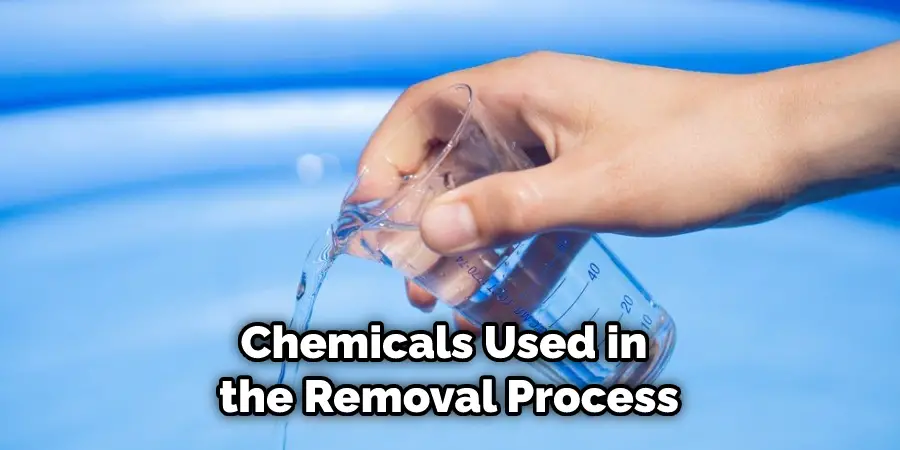
Wear protective clothing and goggles at all times, and make sure to disconnect the power source before opening any filters or valves. Additionally, you should be aware that some chemicals used in the removal process can cause skin irritation and respiratory problems if inhaled or ingested – take proper precautions when handling these materials.
How Often Should I Test My Pool’s Water for Iron and Copper?
It is recommended that you test your pool’s water on a regular basis to ensure optimal water quality. The frequency of testing should depend on the size of your pool, the amount of use, and other factors. Generally speaking, it is best to test your pool at least once a month, and more frequently if there are any signs of an increase in iron or copper levels.
A water test kit can help you to determine the best course of action.
What is the Best Way to Remove Iron and Copper From My Pool Water?
The most effective way to remove iron and copper from pool water is by using a chelating agent. This type of chemical binds to the metals, allowing them to be filtered out before they can cause staining or other damage. Additionally, some filtration systems are equipped with a media specifically designed for removing heavy metals from water.
If you do not have this type of system in place, it is worth looking into investing in one. Finally, you may also want to consider utilizing other pool maintenance techniques such as flocking, which can help reduce the amount of metals in your pool water.
Conclusion
Now you know how to remove copper and iron from pool water. Implementing a preventative maintenance program, using the right chemical balance and regular testing will help keep your pool water free of metals. If you are still having issues with copper or iron, it may be time to call in a professional for more powerful solutions.
By taking action now, you can avoid more costly repairs down the road and ensure that your pool stays safe and clean for swimming.
These are the ways that you can remove copper and iron from your pool water. If you have any other questions or concerns, be sure to consult with a professional. Thank you for reading!

